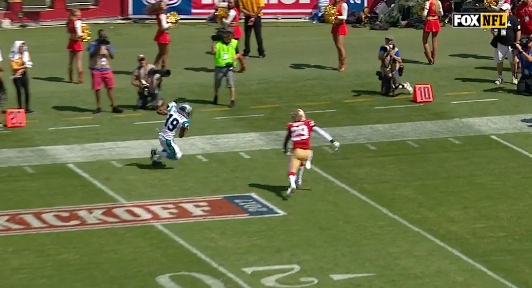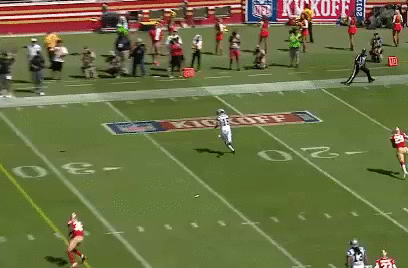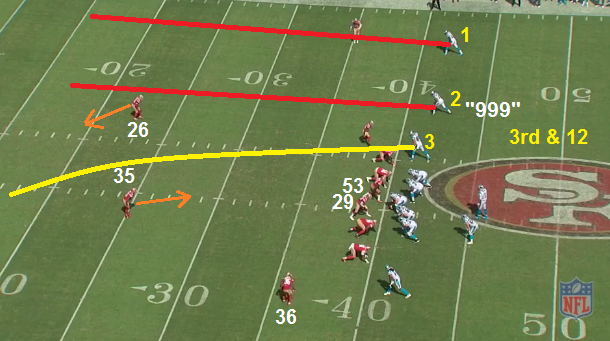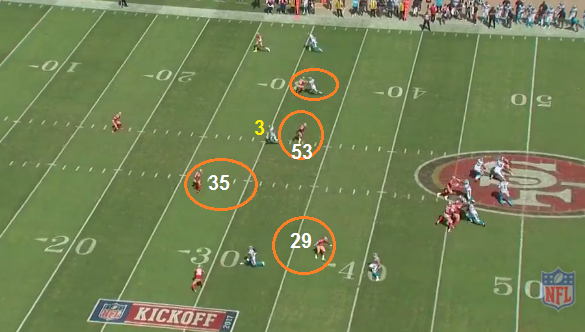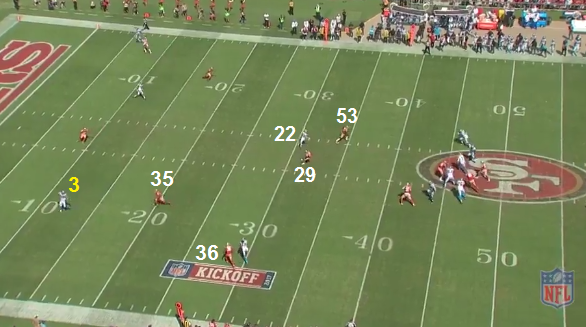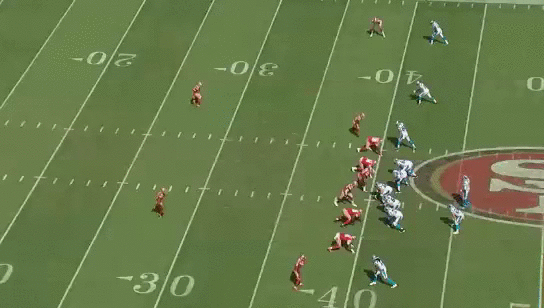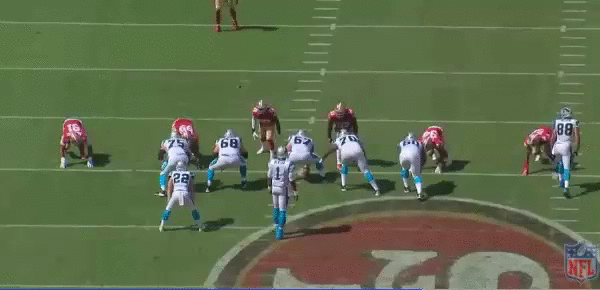Normally I'd go chronological order to piece the game together, but there wasn't any big swings in momentum since it was a lopsided victory. No lead changes, no real pivotal moments that require build up. I watched this game in segments of 49ers D then 49ers O. So I'll show the topics in a similar way.
First up is the blown coverages from the 49ers pass defense. All summer long we heard from the players and coaches how the defense is simplified. Ahmad Brooks said there were only about 10 playcalls. Simple means less confusion. Supposedly. Here's the the touchdown that CAR scored off a blown coverage. Ted Robinson (49ers play by play) mentioned it was on Tartt. When it comes to the blown coverage aspect of the play, the player I don't fault is Tartt. He missed the tackle, but he didn't blow the coverage. This play is up for interpretation because the plays that are the hardest to break down are when a player(s) doesn't correctly perform their assignment. Only the 49ers know what is supposed to happen here.
The 49ers are in Cover 1 blitz (rush 5, man coverage, 1 deep safety). They will drop AA off into coverage and bring Lorenzo (26) off the edge. DJohnson will line up across from Olsen (88). Bow is showing pressure into the A gap but will drop into coverage. The deep cross from the #3 WR (inner most slot WR) was a problem all first half for the 49ers defense.
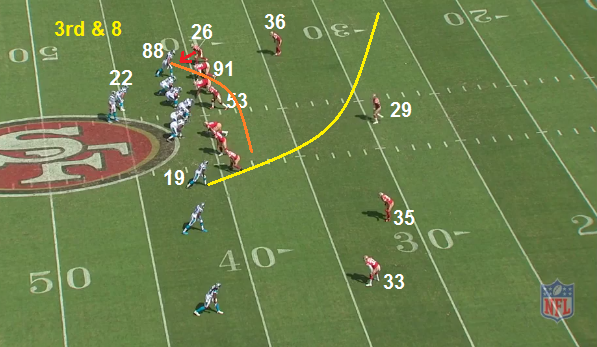
AA jams Olsen and drops into coverage. As Olsen (88) starts his drag route, both DJ and Bow are drawn to Olsen. There is no reason for two defenders to double cover a shallow crossing route. Especially by a lumbering TE.
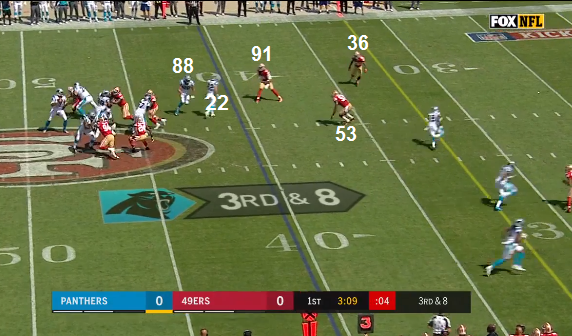
A few different scenarios that should have taken place here.
1) If there is an Under call to be made where if Olsen goes shallow, DJ calls "under!", then passes coverage off to Bow. DJ then drops back to find work, and would see the deep cross.
2) Bow fakes pressure then drops back to cover #3 WR, the deep cross. DJ is supposed to follow Olsen no matter what since he's locked on Olsen on matter where Olsen goes.
Neither of these occur.
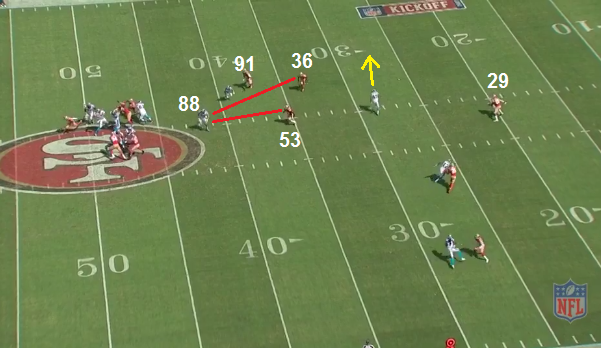
Tartt takes a good angle over to make the tackle but makes one misstep just as he approaches the WR.
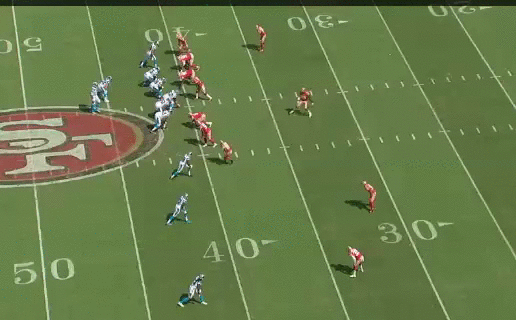
The moment of the misstep. If he approaches aggressively, perpendicular to the sideline, the worst that can happen is the WR tries to get past Tartt up the sideline, but Tartt pushes him out of bounds. By taking a step away from the WR, the WR is able to stop, forcing Tartt to step back towards the WR. Ends up trying to tackle the WR around the shoulders.
